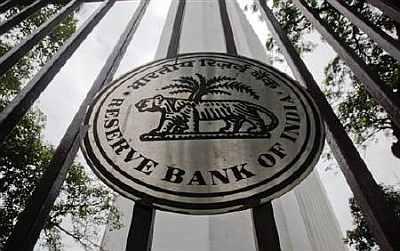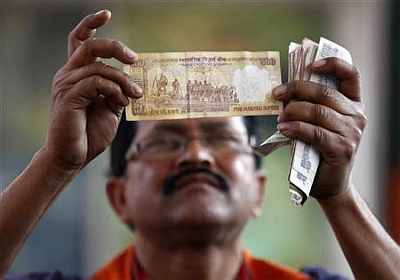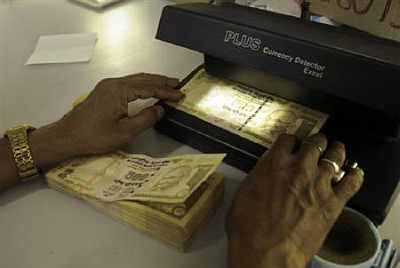 | « Back to article | Print this article |
The debate about growth and deficits
It might be a little late in the day to write about the monetary policy announcement of April 17, but I am going to do it anyway. My defence is that it deserves a broader assessment than the standard "hawkish-versus-dovish" template affords.
Monetary policy these days is all about picking a side in a debate in which the lists of arguments for and against the motion are equally long. Let me be more specific. There is reasonable consensus among economists and commentators that domestic macroeconomic conditions are highly unstable, if not alarming.
The fiscal deficit is unsustainably high and the Budget has done precious little to offer a credible path for consolidation.
The large budgetary gap is feeding a large external deficit (the current account deficit stood at 4.3 per cent of GDP in the third quarter of 2011-12). Inflation may have abated a tad but has hardly been tamed.
Click NEXT to read more...
The debate about growth and deficits
Some of the policy responses to these imbalances are inherently risky -- increasing reliance on short-term external commercial borrowings to pay for the current account gap, for instance, could backfire if lenders refuse to roll these loans over.
The debate, then, is about an appropriate macroeconomic strategy to deal with these problems. Let me (somewhat loosely and perhaps unfairly) refer to the two opposing sides as the "pro-growth" and "anti-growth" camps.
The "anti-growth" camp believes that unless there is a serious attempt to correct these imbalances first, any attempt to spur growth through loose monetary policy could actually make these imbalances worse.
Click NEXT to read more...
The debate about growth and deficits
If demand does pick up, say, on the back of lower interest rates, it could revive price pressures. It could also bloat the import bill further and widen the trade and current account gap. The extreme view is that since the magnitude of these imbalances is worse than it was in 1990-91 (when we were last hit by a balance of payments crisis), another serious crisis is imminent.
The "pro-growth" camp believes that some revival in growth will itself sort things out to a degree. For one thing, if growth stays at the sub-seven per cent level that it is currently clocking, it is bound to hurt tax revenue collections and scupper any hope of even a mild reduction in the budget deficit. The Budget projections are incidentally premised on 7.6 per cent growth in the economy.
Again, since a significant fraction of imports is somewhat inelastic to growth, we are likely to be stuck with a largish deficit unless oil prices come down on a more sustained basis or gold demand moderates substantially.
Click NEXT to read more...
The debate about growth and deficits
While the aggregate trade-deficit is 10 per cent of GDP, it drops all the way to 3.3 per cent if oil and gold imports (adjusted for exports) are removed. Thus, we have to make sure that we get enough capital to feed the deficit.
There is, of course, no guarantee that capital will continue to flow in at the pace that is adequate to pay for the current account gap. The pro-growth camp wants to bet on the fact that if growth does pick up, it could have a positive impact on "sentiment" towards India.
If capital flows do pick up as earnings prospects for companies improve, the anxiety over funding the current account deficit could abate. As this happens, the rupee could reverse direction. Currency appreciation could, in turn, quell inflationary impulses. To cut a long story short, a monetary policy stance that supports growth could set off a virtuous cycle that yields a better fiscal balance as well as lower inflation.
Click NEXT to read more...
The debate about growth and deficits
As with any debate on macroeconomic policy choice, either of these camps could have got its prognosis terribly wrong. In its very action of cutting the repo rate more than expected, the Reserve Bank of India (RBI) seems to have sided with the pro-growth camp. Despite the various riders and caveats that it has put in, my sense is that it will cut rates further and infuse liquidity.
It has, for the first time, almost explicitly defined "potential" growth rate for the economy at 7.5 per cent. This is the RBI's "tolerance" level -- growth rates above this threshold could lead to accelerating inflation.
Going by majority forecasts, growth in the first half of this year could be well below this potential rate, and thus room for further monetary easing exists.
Click NEXT to read more...
The debate about growth and deficits
What is the likelihood that the RBI has picked the right side in this debate? To gauge this, one could perhaps take some cues from the current situation in Europe. European policy makers, at the insistence of Germany, have sided with the "anti-growth" camp in battling their sovereign debt crisis.
Thus, they have insisted on more austerity (or fiscal consolidation) as a precondition for fiscal support to the crisis-hit peripheral states and for monetary stimulus in general. This tack seems to be going seriously wrong.
Austerity has made growth conditions worse in the periphery and poor growth appears to be feeding through to worse rather than improved fiscal conditions. The heft of professional opinion currently appears to be in favour of growth and stimulus before austerity, and European politicians and economic managers seem to be paying heed.
Click NEXT to read more...
The debate about growth and deficits
The European Central Bank, for instance, certainly seems to be more inclined to provide large doses of monetary stimulus to prop up the sagging fortunes of the region. Between December 2011 and now, it has pumped over euro 1 trillion into the market through refinance operations. The markets expect more.
If Europe, despite its obvious differences with India, is the best guide to policy making in economies saddled with large budget deficits and slowing growth, the RBI might be on the right track.
If it isn't, then monetary easing against the backdrop of a large and sticky budget deficit could lead to higher inflation and a plummeting currency. I am in the pro-growth camp and keeping my fingers crossed.
The author is chief economist, HDFC Bank.







